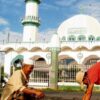Table of Contents
- 1 Introduction to Independence Palace
- 2 History of Independence Palace Vietnam
- 3 Independence Palace’s Architecture
- 4 What to Do at Independence Palace Saigon
- 5 Travel Guide for Visiting the Independence Palace in Ho Chi Minh City, Vietnam
- 6 Visitor Tips Before Visiting the Independence Palace in Ho Chi Minh City
- 7 Conclusion
- 8 Other Must-Visit Attractions in Ho Chi Minh City
- 9 Recommended Top Local Tour Company in Ho Chi Minh City Offering Tours Including the Independence Palace
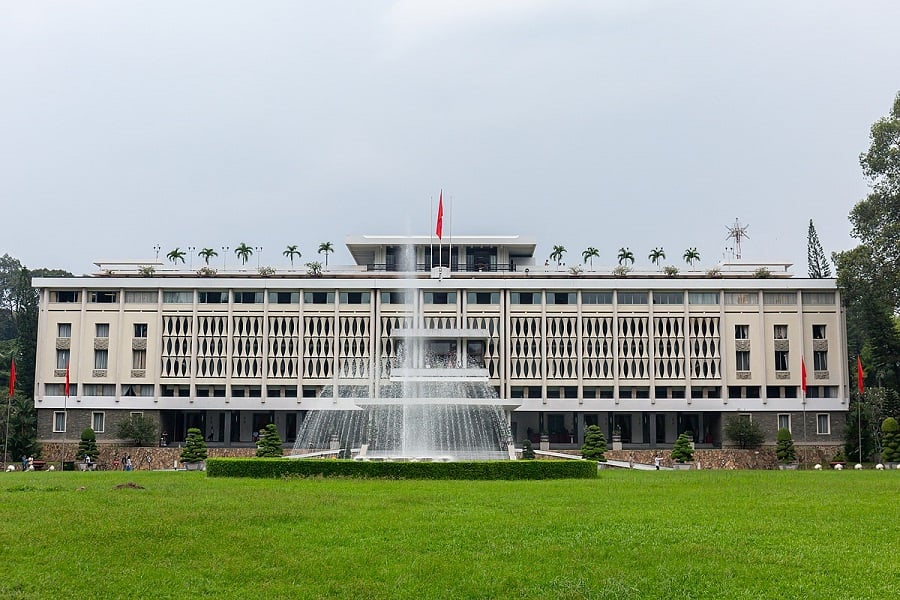
The Independence Palace, also known as the Reunification Palace, is one of the most iconic and historically significant landmarks in Ho Chi Minh City. This grand structure symbolizes Vietnam’s journey to independence and is a must-visit for anyone interested in the country’s rich history and cultural heritage. This guide offers a comprehensive exploration of the Independence Palace, detailing its location, history, architecture, travel guide, and practical travel tips.
-
Introduction to Independence Palace
The Independence Palace, also known as the Reunification Palace, is a historic landmark in the heart of Ho Chi Minh City. It served as the presidential residence and workplace during the Vietnam War and is now a symbol of the country’s reunification. Visitors can explore the palace’s elegant rooms, historical artifacts, and beautiful gardens.
During the Vietnam War, the Independence Palace served as the residence and office of South Vietnamese President Nguyen Van Thieu. Designated as a historical monument, it has witnessed significant changes in Saigon’s history while preserving the essence of Eastern culture.
The Independence Palace symbolizes Vietnam’s victory, peace, and territorial integrity. Featuring a glamorous design, the palace boasts hundreds of rooms equipped with luxurious furnishings and decorations, along with an expansive and beautiful exterior space. It is the perfect place for visitors to escape the Southern Vietnam heat, enjoy the fresh, cool air, and explore one of the most remarkable structures in Ho Chi Minh City.
-
History of Independence Palace Vietnam
After the French conquered six provinces in South Vietnam (Cochinchina), they built Norodom Palace in 1868 as a residence for the Governor-General, completing it in three years. The French Governor of Cochinchina used the palace from 1871 to 1887, calling it the Governor’s Palace. During the Indochina invasion, all Governors-General of French Indochina resided and worked in the palace from 1887 to 1945.
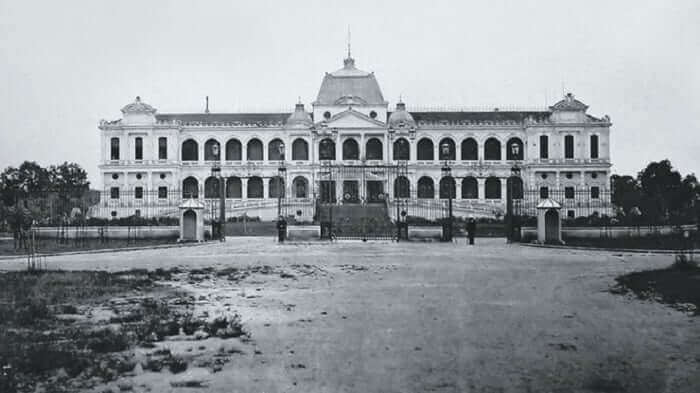 On March 9, 1945, Japanese forces overthrew the French and seized control of Indochina, designating Norodom Palace as their headquarters in Vietnam. After Japan’s defeat in World War II, the French returned in September 1945, reclaiming the palace as the headquarters of the French regime in Vietnam.
On March 9, 1945, Japanese forces overthrew the French and seized control of Indochina, designating Norodom Palace as their headquarters in Vietnam. After Japan’s defeat in World War II, the French returned in September 1945, reclaiming the palace as the headquarters of the French regime in Vietnam.
The French were defeated at Dien Bien Phu in May 1954 forced them to sign the Geneva Agreements and withdraw their troops from Vietnam. The United States then occupied the South, leading to the temporary division of Vietnam: the North, led by the Democratic Republic of Vietnam, and the South, led by the Republic of Vietnam under Ngo Dinh Diem, funded by America. Norodom Palace was renamed Independence Palace, becoming Ngo Dinh Diem’s office and residence.
In February 1962, a rebellious bombing severely damaged the palace. Consequently, Ngo Dinh Diem ordered the construction of a new palace, designed by Vietnamese architect Ngo Viet Thu. Although construction began in 1962, Diem and his brother were assassinated in 1963 before the palace was completed in 1966. The new Independence Palace then served as the home and workplace of Nguyen Van Thieu from 1967 to 1975.
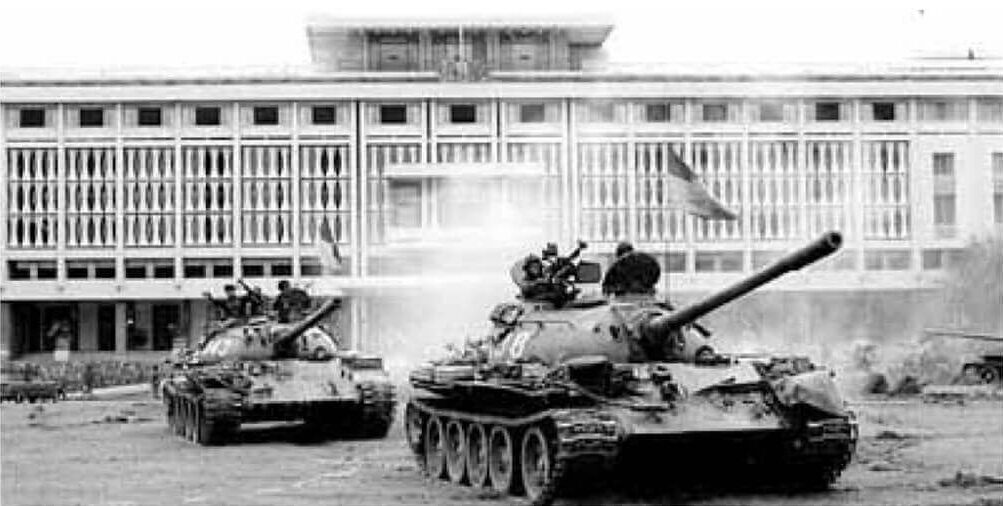 On April 30, 1975, two North Vietnamese Army tanks crashed through the walls of the Independence Palace, marking the fall of the Republic of Vietnam, the end of the Vietnam War, and the reunification of the country. Today, this historic site is known by two names: The Independence Palace and the Reunification Palace.
On April 30, 1975, two North Vietnamese Army tanks crashed through the walls of the Independence Palace, marking the fall of the Republic of Vietnam, the end of the Vietnam War, and the reunification of the country. Today, this historic site is known by two names: The Independence Palace and the Reunification Palace.
-
Independence Palace’s Architecture
Designed by architect Ngô Viết Thụ, the Independence Palace was built on a 12-hectare plot of land and includes a large mansion of 80-meter width. The palace is well-known not only for its historical significance but also for its unique architecture. It is a harmonious blend of modern Western and classical Eastern styles.
3.1. Exterior
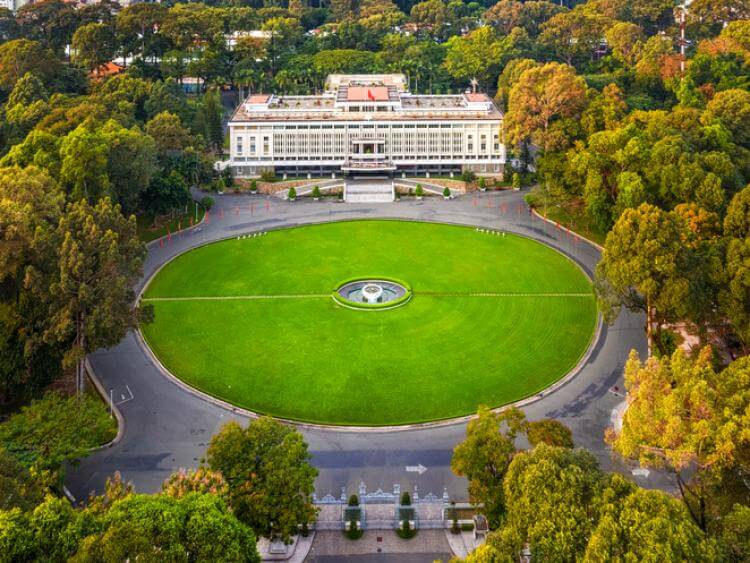 The palace’s exterior features spacious lawns, botanical gardens, and a grand façade. The front entrance is marked by large gates and a fountain, symbolizing prosperity and peace. The design incorporates feng shui elements, enhancing its aesthetic and cultural value.
The palace’s exterior features spacious lawns, botanical gardens, and a grand façade. The front entrance is marked by large gates and a fountain, symbolizing prosperity and peace. The design incorporates feng shui elements, enhancing its aesthetic and cultural value.
3.2. Interior
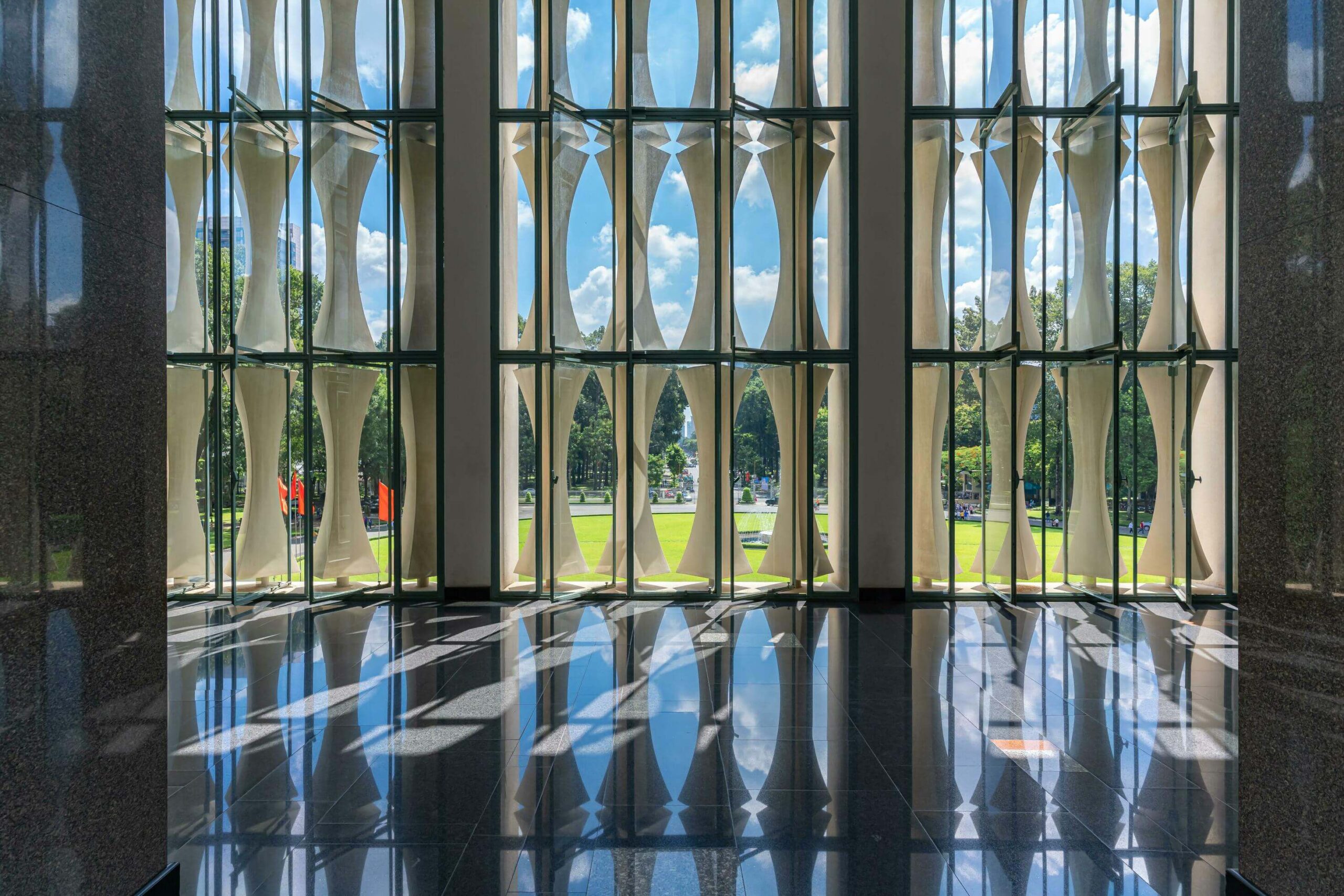 The interior is equally impressive, with well-preserved rooms and halls reflecting the opulence of the era. Key areas include the Presidential Office, Cabinet Room, and Banquet Hall, each furnished with period-specific décor. The basement houses a war command room with maps and telecommunications equipment from the Vietnam War era.
The interior is equally impressive, with well-preserved rooms and halls reflecting the opulence of the era. Key areas include the Presidential Office, Cabinet Room, and Banquet Hall, each furnished with period-specific décor. The basement houses a war command room with maps and telecommunications equipment from the Vietnam War era.
-
What to Do at Independence Palace Saigon
Visitors can engage in various activities to make the most of their visit.
4.1. Historical Artifacts
Explore the extensive collection of historical artifacts displayed throughout the palace. These items, including documents, photographs, and personal belongings of historical figures, provide deep insights into Vietnam’s history and the significance of the palace.
4.2. Artworks
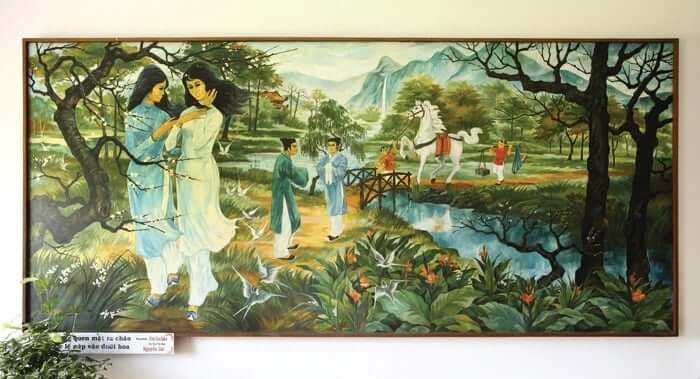 Admire the collection of artworks that adorn the palace. These include traditional Vietnamese paintings, sculptures, and tapestries that reflect the country’s rich cultural heritage.
Admire the collection of artworks that adorn the palace. These include traditional Vietnamese paintings, sculptures, and tapestries that reflect the country’s rich cultural heritage.
4.3. Independence Palace Tanks
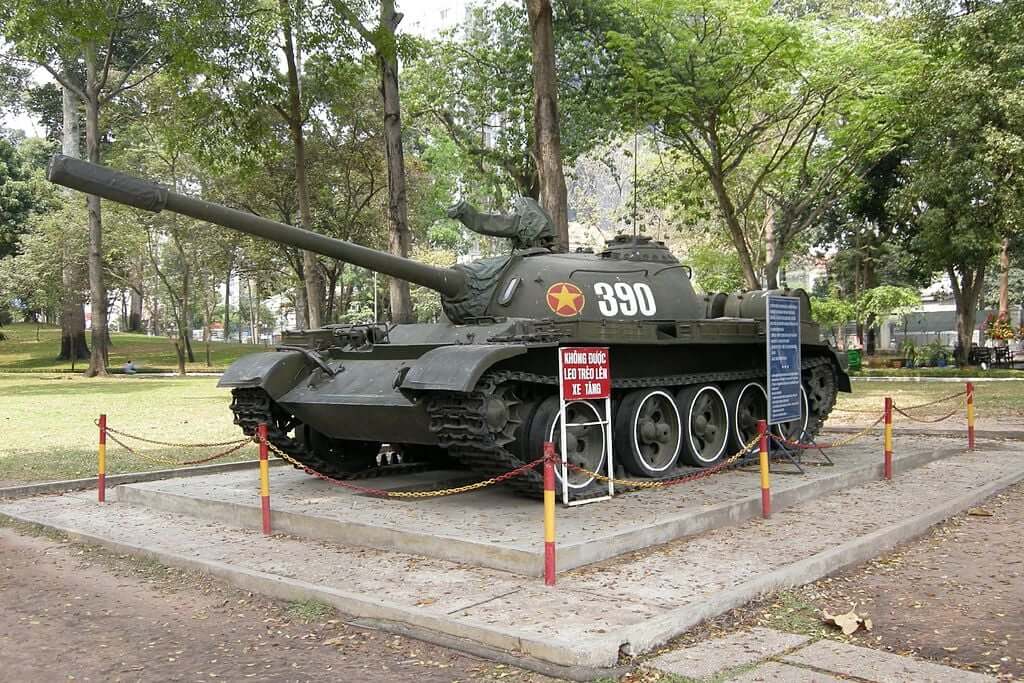 One of the most iconic features of the Independence Palace is the tanks displayed on the grounds. These tanks, which broke through the palace gates on April 30, 1975, are preserved as a reminder of the pivotal moment when Saigon fell, leading to the reunification of Vietnam.
One of the most iconic features of the Independence Palace is the tanks displayed on the grounds. These tanks, which broke through the palace gates on April 30, 1975, are preserved as a reminder of the pivotal moment when Saigon fell, leading to the reunification of Vietnam.
-
Travel Guide for Visiting the Independence Palace in Ho Chi Minh City, Vietnam
Plan your visit to the Independence Palace with these practical tips.
5.1. Independence Palace Saigon Location
The Independence Palace is centrally located at 135 Nam Ky Khoi Nghia Street, District 1, Ho Chi Minh City. Its central location makes it easily accessible from various parts of the city.
5.2. How to Get to the Independence Palace
You can reach the Independence Palace by various means:
- Taxi or Ride-Hailing Services: Apps like Grab are convenient for getting around the city.
- Public Bus: Several bus routes pass by the palace.
- Walking: If you are staying in District 1, the palace is within walking distance from many popular hotels and attractions.
5.3. Opening Hours
The Independence Palace is open daily from 8:00 AM to 4:00 PM. It’s advisable to visit early in the day to avoid the crowds and enjoy a more peaceful tour.
5.4. Entrance Fee
The entrance fee for the Independence Palace is VND 40,000 for adults and VND 10,000 for children. This fee includes access to all areas of the palace, including the main building and the garden.
-
Visitor Tips Before Visiting the Independence Palace in Ho Chi Minh City
To enhance your visit, consider these tips:
- Dress Modestly: Respect the historical significance of the palace by dressing appropriately.
- Allocate Enough Time: Plan to spend at least two to three hours exploring the palace and its grounds.
- Bring a Camera: Photography is allowed in most areas, so bring a camera to capture the beautiful architecture and historical exhibits.
- Stay Hydrated: The climate can be hot and humid, so carry water to stay hydrated during your visit.
-
Conclusion
The Independence Palace is a must-visit landmark in Ho Chi Minh City, offering a profound insight into Vietnam’s history and culture. Its stunning architecture, historical exhibits, and significant artifacts make it a captivating destination for all visitors.
-
Other Must-Visit Attractions in Ho Chi Minh City
While in Ho Chi Minh City, don’t miss other notable attractions:
- Ben Thanh Market: A vibrant market for shopping and local cuisine.
- Saigon Notre-Dame Basilica: An iconic cathedral with beautiful French architecture.
- War Remnants Museum: A museum documenting the Vietnam War.
- Saigon Central Post Office: A historical post office designed by Gustave Eiffel.
- Cu Chi Tunnels: An extensive network of underground tunnels used during the war.
-
Recommended Top Local Tour Company in Ho Chi Minh City Offering Tours Including the Independence Palace
For a comprehensive tour experience, consider booking with Vietnam Muslim Tours – Asia Travel Expert. This top-rated local tour company offers guided tours that include the Independence Palace and other key attractions in Ho Chi Minh City. Their knowledgeable guides and well-organized itineraries ensure a memorable and educational visit.



